One of the great things about establishing a pond is it brings to mind the sense of stewardship and ecological conservation. As addressed in a separate post, good ecology relies on a sustainable system (one that can self-manage). A sustainable system can be thrown off balance when one or more elements of that cycle are not present. One of the ways to prevent an ecosystem from becoming depleted, barren, or otherwise not sustainable, is to increase biodiversity. The more creatures playing a role in an area, the healthier the area is. A pond, for example, can incorporate much biodiversity through the various plants, bugs, amphibians, fish, birds and mammals that it supports.
I’ll leave out the details of how biodiversity impacts sustainability, and instead talk about what we can do to bring creatures onto our land. We won’t exactly be buying frogs or bringing them to our pond, nor will we be corralling them at night to roost. So how can we encourage natural wildlife and still provide protection?
What we will be doing is encouraging a stay by providing a safe space and necessary environmental conditions. Here are some ways we can contribute to wildlife on our farm:
Plant Pollinators
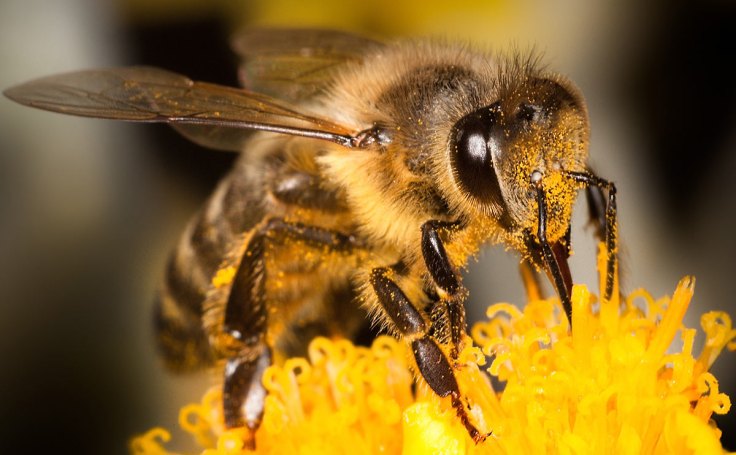 My milkweed brings all the bees to the yard! Despite their bad rap (and mine), bees are vital to plant cultivation. Without bees, we wouldn’t eat. Many plants, including fruit trees, cannot produce fruit without pollination. Bees act as the carrier of pollen between plants in a weird third-wheel, sex slave sort of way, and this plant reproduction results in a yield that allows us to harvest awesome sauce. In addition to being surrogate fluffers, bees eat pollen, and some make homes out of it. It is a mutually beneficial relationship between plants (flowers) and bees. The biggest benefactor, however, is us: we get the joy of eating all those great apples without having to lift a leg! Okay, we do need to put in a little work.
My milkweed brings all the bees to the yard! Despite their bad rap (and mine), bees are vital to plant cultivation. Without bees, we wouldn’t eat. Many plants, including fruit trees, cannot produce fruit without pollination. Bees act as the carrier of pollen between plants in a weird third-wheel, sex slave sort of way, and this plant reproduction results in a yield that allows us to harvest awesome sauce. In addition to being surrogate fluffers, bees eat pollen, and some make homes out of it. It is a mutually beneficial relationship between plants (flowers) and bees. The biggest benefactor, however, is us: we get the joy of eating all those great apples without having to lift a leg! Okay, we do need to put in a little work.
Some of that work is making sure that the environment is welcoming for bees. This means planting flowers that they just get high about. Aromatic flowers, bee balm, mint and lavender, etc., can all attract bees.
Find out more about bee attracting plants.
And bees be like, can we crash here?
Of course you can! Check out these cute mason bee houses!

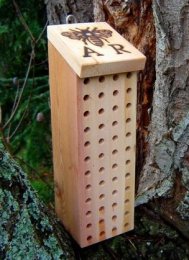

Butterfly Bath
Like bees, butterflies pollenate. They also eat larvae that could disease a plant which makes them extra helpful gardening tools. Aaannnddd, they’re prima donnas. Give them a shallow plat with sugar water and four 2″ squares of sponge and they are happy.
Bonny Plants will show you how to one-up your neighbor and bring in the pickiest butterflies with this fancy butterfly bath (pictured).
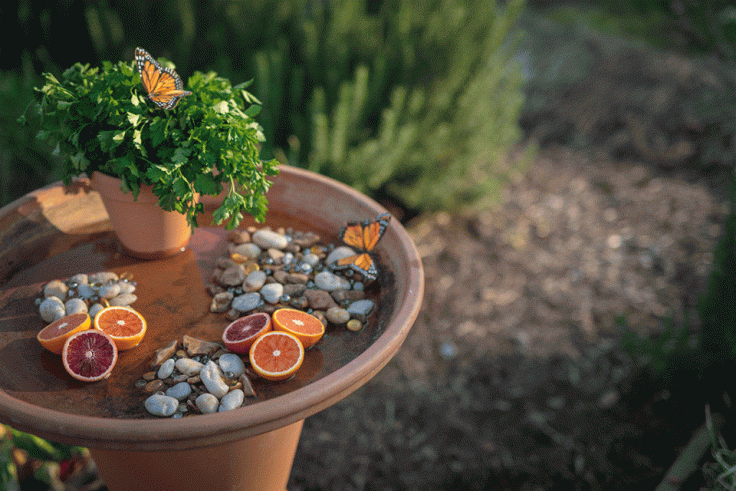
Birds
Who doesn’t like the sound of chirping birds outside your window? The sing-song melody of birds is yet another joy of farm life. And the cat likes it, too.
Generalized, birds can be lovely, helpful (they eat bugs), unhelpful (they eat spiders), and require some unintended maintenance. There are so many kinds of birds local to one area, that determining who to keep and who to shoo can be difficult. For example, chickadees are lovely creatures and add a bit of whimsy to a garden. However, bluejays can be aggressive and scare away smaller birds. My rule of thumb is to allow a welcome habitat for a variety and let them sort themselves out (biodiversity, yo!)
Bird Bath
Similar to the butterfly bath, but with a deeper dish. This way birds can splish, splash, taken’ a bath. They drink the water (rinse it out regularly) and use the water to clean their feathers for premium flight.
Bird House
 The sad truth of urban growth is that birds are fast losing their homes to deforestation. Return some
The sad truth of urban growth is that birds are fast losing their homes to deforestation. Return some
real estate by preserving wooded areas and tacking up bird houses. Best positioned higher up in a wooded area if you have one, to allow for birds to feel at home in their natural habitat.
Bird houses vary by bird, so do some research on what kind of birds you have in your area and then search for bird houses that match that bird. A couple things to note:
- The small opening in the front may seem a bit small for the birds we are looking at, but trust me, it fits. If the opening is too big, a bird won’t use it.
- Consider the height of the tree/post/house and where the bird house should go. Some birds will use a bird house only 5′ above the ground. Others won’t.
- Make sure there is at least a 3″ overhang above the entrance to the house to prevent the bird from getting wet while perching.
Check out Birdwatching Bliss for birdhouse plans
Bird Feeders
I’m a fan of feeding birds because a well situated bird house give our indoor car hours of window time (aka, a distraction free work day free of all by the weird cat chatterings). However, feeding birds is a commitment. Keep in mind that almost all birds are migrational and if they have a steady supply of food, why would they leave? If your little feather balls are starting to look more like plushies and taking up roost late into fall, make sure that you are putting out bird seed all winter long or you will be dealing with some dead bird come spring. Hardly the image of seasonal rebirth.
Toad House
A toad house, you say? Yes. Just like in the beloved children’s books, Frog and Toad, you will need to create a little adobe with solarium and proffer cookies. Actually, not really. You just need an upturned flower pot near water to provide shade. That simple. I mean, you could get fancy if you felt up to getting crafty with concrete. Toads are cool.
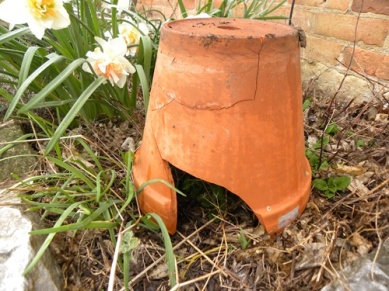
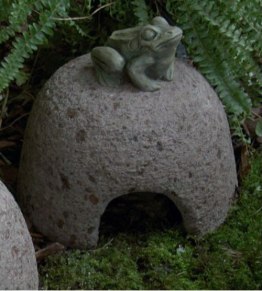
Bats
Sonic flying bug eating machines? Yes, please. They keep the wildlife party going into the wee hours. [Still need more information on creating bat habitats]
Photo Credits
Bee: modernfarmer.com
Mason Bee Houses: (clockwise) gardeners.com; alternativeconsumer.com; indulgy.com
Butterfly Bath: bonnieplants.com
Birdhouse: backyardchirper.com
Toadhouse: (right to left) homeandgardencafe.com; designswan.com

Leave a comment